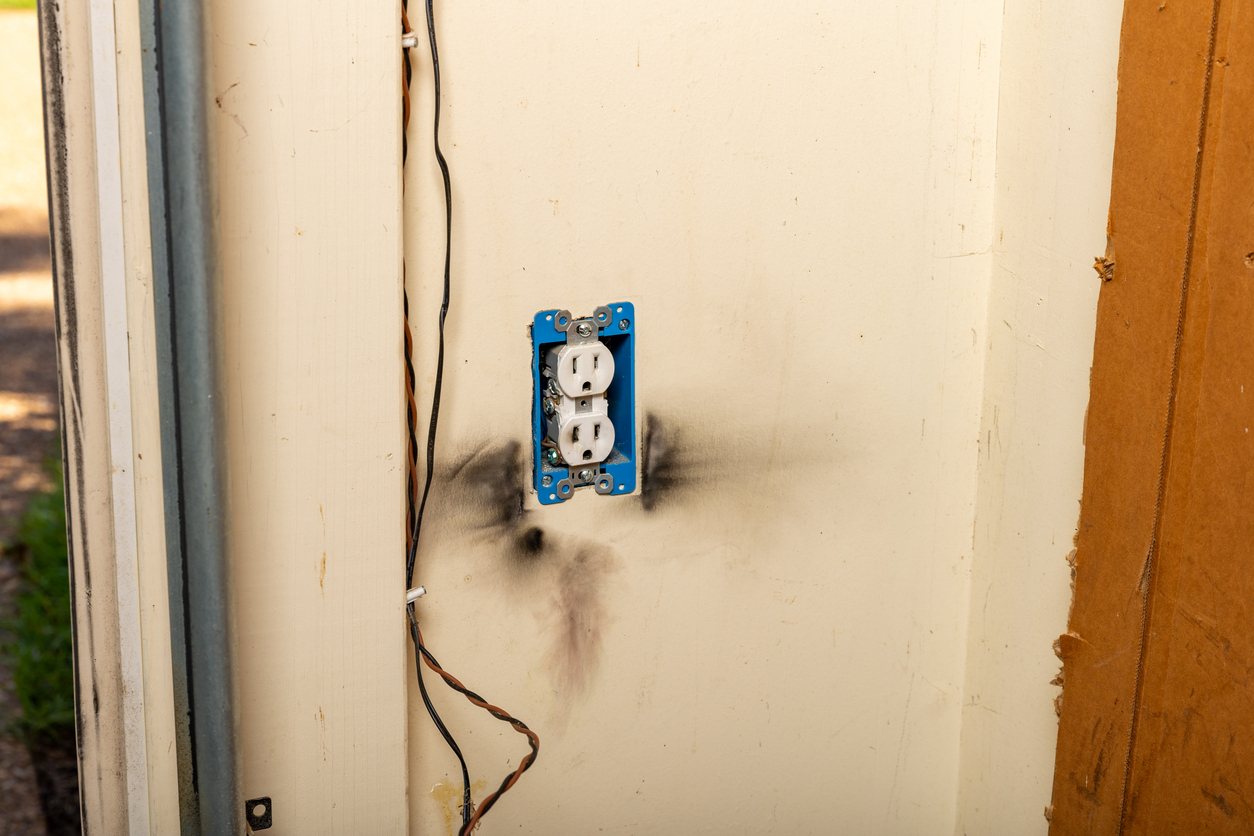Electrical issues in your home can be overwhelming, but understanding how to diagnose them can help you avoid hazards and resolve problems efficiently. From flickering lights to tripping breakers, knowing what to look for can give you a head start before calling in a professional. This guide walks you through the key steps in diagnosing electrical problems, offering practical tips to help identify potential causes in your home.
Flickering or Dimming Lights?
Flickering or dimming lights can signal various electrical problems, but the issue is often straightforward to diagnose.
Loose Bulbs or Fixtures:
Sometimes, the issue can be as simple as a loose connection between the bulb and its socket. Start with these quick steps to rule out a basic problem:
First, check if the bulb is faulty by replacing it with a new one.
If the new bulb doesn’t fix the problem, try removing and re-inserting the bulb securely into the socket. Sometimes, dealing with a tricky alignment into the base can be the issue.
Examine the base of the bulb holder for any loose parts. If the base seems unstable, the connection might be the problem.
If the fixture itself seems loose, turn off the breaker (or unplug it if it’s portable), carefully tighten connections, and reassemble. If flickering persists, the fixture could be faulty, or there may be a larger issue, which leads us to the next possibility.
Overloaded Circuits:
Flickering lights are sometimes caused by too many appliances or devices running on the same circuit, resulting in fluctuating power. This is a common issue in homes with older electrical systems that weren’t built to handle modern loads. Here’s how to check for an overloaded circuit:
Unplug devices and appliances in the affected area. If the flickering stops, the circuit is likely overloaded.
Consider redistributing high-wattage devices, such as refrigerators or space heaters, to different circuits in the home.
If circuit overload is a frequent issue, an electrician may need to upgrade your electrical panel to accommodate modern energy needs.
Voltage Issues:
If neither a loose fixture nor overloaded circuits are causing the flickering, the problem could lie with voltage fluctuations. Here’s how to check for voltage issues:
Use a voltage tester to measure the consistency of power at the affected outlets.
If the voltage reading is irregular, it may indicate failing electrical components or deteriorating wiring.
In older homes, this could signal a larger issue with the wiring itself. If voltage inconsistencies are found, contact an electrician to prevent further damage.
Frequent Tripping of Circuit Breakers?
Circuit breakers are designed to trip when they detect an electrical overload or fault in the system. However, if your breaker trips frequently, this could indicate a problem that needs to be addressed.
Overloaded Circuits:
A common cause of frequent tripping breakers is overloaded circuits, especially when running high-energy devices like space heaters, microwaves, or air conditioners. Here’s how to diagnose an overloaded circuit:
Take note of the appliances running when the breaker trips.
Try unplugging or turning off some devices to reduce the load. If the breaker no longer trips, the circuit is likely overloaded.
In this case, adding a new circuit for larger appliances or upgrading the electrical panel may be necessary.
Short Circuits:
A short circuit occurs when a hot wire comes into contact with a neutral wire, creating an immediate increase in current and causing the breaker to trip. Here’s how to check for short circuits:
Inspect outlets and switches for signs of burning, charring, or unusual odours.
If you notice burn marks or melted wiring, a short circuit is likely the cause.
Short circuits require professional attention. Contact an electrician immediately if you suspect this problem.
Ground Faults:
Ground faults occur when a hot wire comes into contact with a grounded part of the system, like a metal box or ground wire, causing the breaker to trip. Here’s how to identify a ground fault:
Inspect outlets for GFCI (Ground Fault Circuit Interrupter) outlets. These are commonly found in bathrooms and kitchens.
If the breaker trips when using an appliance near water, a ground fault could be the cause.
GFCI outlets are designed to prevent ground faults, but if yours is faulty or not present, you’ll need an electrician to install or repair the outlet.
Outlets That Don’t Work?
If you’re dealing with non-functional outlets, the cause could be simple or complex, depending on the situation.
Tripped GFCI Outlet:
GFCI outlets are commonly found in areas prone to moisture, like kitchens, bathrooms, and garages. These outlets are designed to trip and cut off power when they detect an imbalance in the electrical current. Here’s how to reset a tripped GFCI outlet:
Press the “reset” button on the outlet to restore power.
If the outlet doesn’t reset, it could be faulty or indicate a larger electrical issue.
Loose or Damaged Wiring:
Over time, outlets may become loose or damaged due to wear and tear, preventing them from providing power. Here’s how to check for loose or damaged outlets:
If the outlet feels wobbly, it may be loose inside the wall. Turn off the breaker and inspect the outlet box.
Carefully, examine the outlet box and wires that you can see. If you see frayed wires or burnt connections, the outlet is damaged and needs replacement.
In this case, you’ll need to contact an electrician to repair or replace the outlet safely.
When to Call a Professional for Diagnosing Electrical Problems
Diagnosing electrical problems in your home can be a simple process when dealing with minor issues like loose bulbs or tripped GFCI outlets. However, more serious concerns, such as overloaded circuits or short circuits, require professional expertise. If you’re in or near Prescott, Ontario, Beattie Dukelow Electrical Inc. is here to help with diagnosing and resolving any electrical issues you may have. Contact us today for expert services that ensure your home stays safe and functional.

